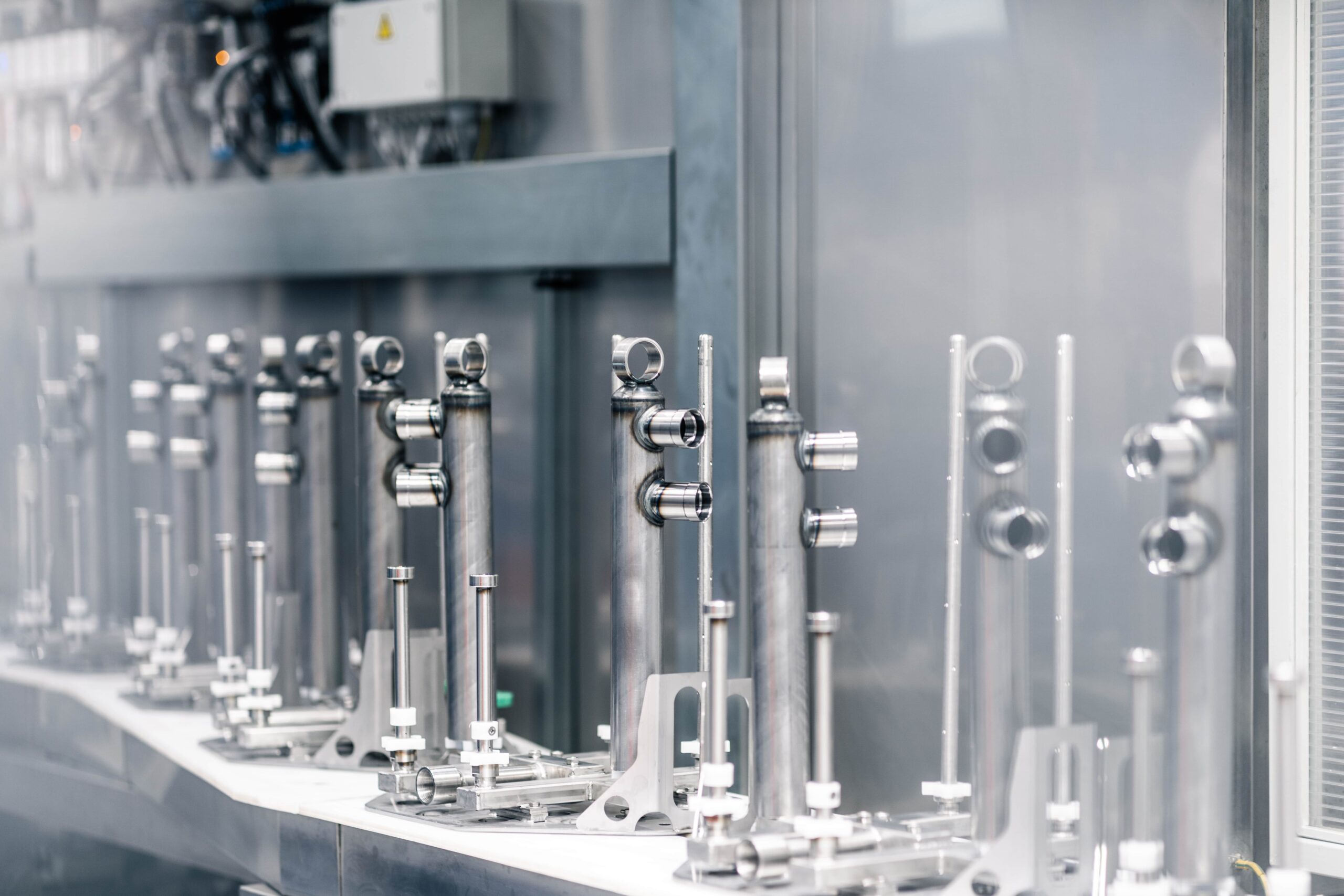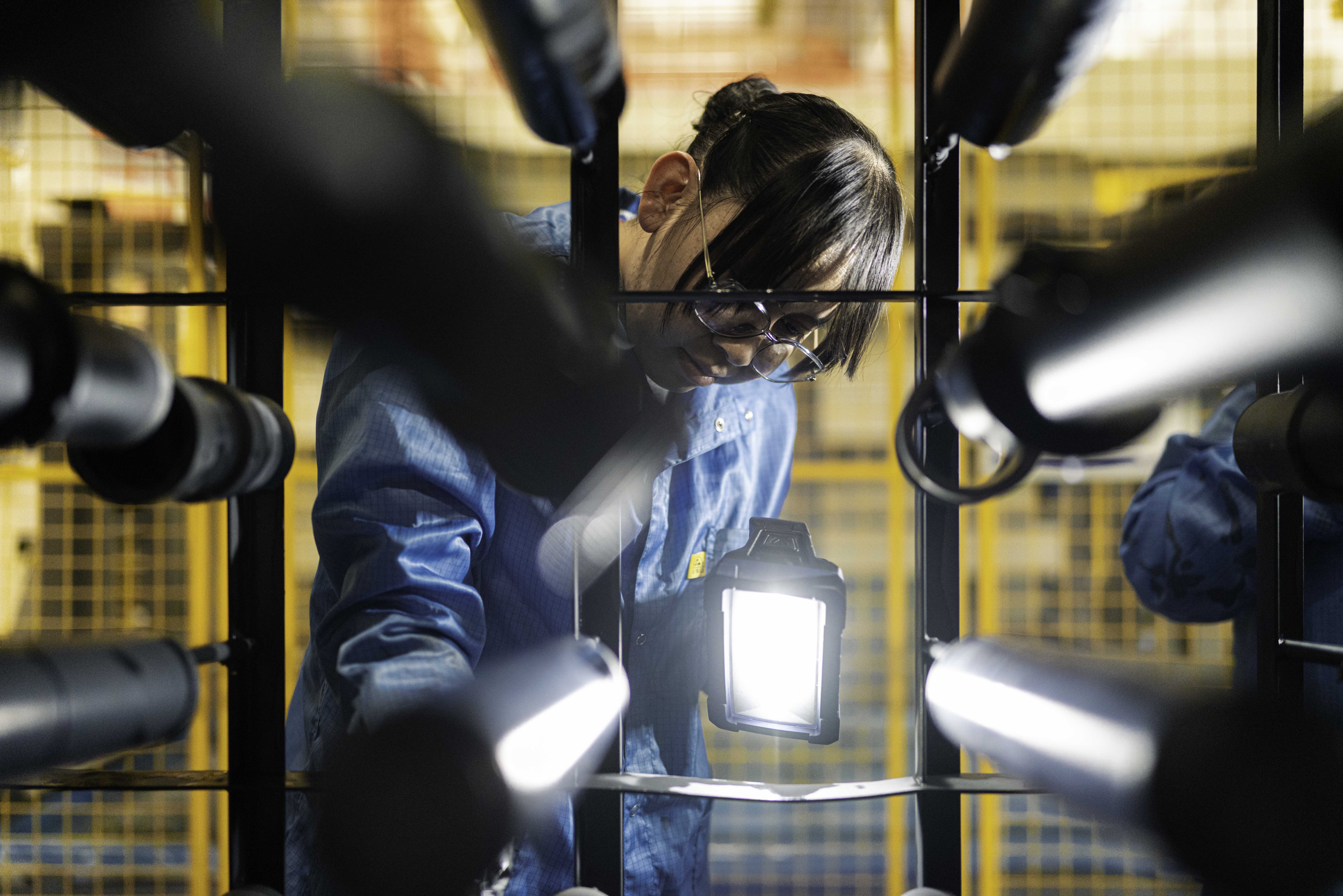

BILSTEIN DampTronic® II technology for the BMW 5 Series G60/G61
For superior handling: OE suspension development at the highest level
The BMW 5 Series is renowned for its premium quality and driving comfort. Since its introduction, it has established itself as a leading model in the upper middle class. Accordingly, the requirements BMW set out for the new 5 Series generation (G60/G61) were extremely demanding. The engineers at BILSTEIN faced a complex challenge: to develop a suspension system that not only meets BMW’s high standards but also stands out in the competitive market. However, the suspension specialists at BILSTEIN managed to master this challenge. A variant of the BILSTEIN DampTronic® II technology, specifically adapted to the complex requirements of BMW, emerged as the ideal solution for the customer.
“The customer requirements were very extensive,” Andreas Rausch recalls of the specifications that BMW presented for the new G60/G61 to BILSTEIN and other leading suspension manufacturers. “The criteria were primarily high comfort, low weight and easy tunability,” says the technical project manager of the BMW team at BILSTEIN. Comfort in particular has been an increasingly important criterion in automotive development for years: Vehicles should offer maximum comfort and drive particularly smoothly, which requires soft damper tuning. On the other hand, the shock absorbers must always ensure traction even during critical driving maneuvers. A requirement that demands greater damping forces. A classic conflict of objectives.

BILSTEIN DampTronic® II: Semi-active suspension technology resolves the conflict
With DampTronic® II, BILSTEIN had a semi-active suspension technology in its range that it had developed itself and which seemed to be ideally suited as a basis for the G60- and G61- generation of the BMW 5 Series. Designed as an continuously adjustable damper, the system enables the compromise between ride comfort and driving dynamics to be largely resolved: The damping forces are adjusted according to the current driving situation by an electrically controlled valve within hundredths of a second.
The premium manufacturer from Munich was immediately impressed by the driving dynamics of the system, particularly due to its high comfort potential. “The customer literally got hooked on our technology,” reports Andreas Rausch. And the BILSTEIN system was also convincing in other critical disciplines:
Andreas Rausch “The outstanding feature of the DampTronic® II technology is that a single electronically controlled valve regulates both the rebound and compression direction of the damping. In contrast to many other systems that use separate valves for each direction, here it is possible to precisely control both damping directions with just one valve.”
Decisive advantages in terms of performance, weight, packaging and costs
The decisive benefit of this technical innovation: Not only advantages in terms of performance, but also in terms of weight, installation space and costs. Andreas Rausch: “We were therefore not only able to generate a cost benefit compared to two-valve solutions. We were also able to achieve a significant weight advantage.”
This proved to be a significant competitive advantage. Especially against the backdrop of the strict requirements placed on vehicle weight in the automotive industry. “We were very, very strongly driven towards weight in the award phase and also benchmarked against the other providers,” reveals the engineer. No surprise: after all, every kilogram saved has a positive effect on CO₂ emissions – a critical factor that plays an increasingly important role, especially for premium manufacturers such as BMW, in times of stricter emissions regulations.
BILSTEIN’s experience in lightweight construction came into its own here: the suspension developers got everything they could out of the available technology in terms of design in order to undercut the weight specifications. This required intensive collaboration between the development and production teams, who developed optimized solutions through numerous simulations and tests.
We love setting benchmarks. With our innovative technologies, we are shaping the present and the future of damper design. Find out all about the most exciting BILSTEIN technologies here.
Read moreBMW 5 series G60 and G61 development: Extremely goal oriented and trusting cooperation
Once BMW had opted for BILSTEIN’s DampTronic® II, the focus was on joint further development and coordination. “The collaboration with the customer was extremely goal-oriented,” recalls Andreas Rausch. Both sides already knew each other’s working methods exceptionally well from years of collaboration on other projects.
Andreas Rausch “The customer gave us a relatively large amount of freedom: BMW already knew from many years of partnership what we were capable of and where our strengths lay. This trust gave us room to maneuver during development because the customer knew exactly that we would set the right priorities.”
One of the biggest challenges was to adapt the suspension to the numerous different variants of the BMW 5 Series. “The aim was to develop solutions for combustion engines, BEV and hybrid models as well as the sports version,” reports Andreas Rausch. Each drive type placed specific demands on the tuning of the shock absorbers.
In light of these complex requirements, it was crucial to consider the manufacturing technology early on in the concept process with a view to subsequent series production. “The development showed impressively that a product is not only determined by its technology, but also to a large extent by the manufacturing technology and the optimization of the supply chain,” Rausch continues. “This is where the ‘Design for Manufacturing’ (DFM) principle comes into play: even in the early phases of product development, in the prototype phase, you have to keep an eye on the manufacturing processes and the existing machinery. You have to analyze at an early stage which systems are needed and what is already available.”

Forward-looking planning
This forward-looking planning helped to develop targeted, industrializable solutions even under the challenging conditions.
Andreas Rausch “The ever-shorter development cycles in particular require prototype development to be closely linked to the procurement of production equipment. As soon as the prototypes are tested, the design must be ready for production to start – because the time required to procure and set up the equipment is considerable.”
While the current BMW 5 Series generation with BILSTEIN’s DampTronic® II technology is now on the road and impresses with its superior handling, the suspension specialists at BILSTEIN have already identified further potential for optimization. Further development is focusing primarily on the insourcing of core components such as the magnetic valves. “Our aim is to further increase added value and become more independent of external suppliers,” explains Andreas Rausch. There is also a clear focus on optimizing and simplifying DampTronic® II-specific components in order to ensure more efficient production processes.

Future-oriented mindset
But BILSTEIN is already thinking one step ahead: “We are already in the next lifecycle of the 5 Series and are working on the next generation,” reveals Rausch. The focus is not only on further technological development, but also on the changing requirements of the automotive industry. With this future-oriented mindset, BILSTEIN is ensuring that the technology will continue to meet the high demands of car manufacturers in the coming years and master the challenges of a changing industry.
With DampTronic® II, BILSTEIN has a semi-active suspension technology in its range which, especially as original equipment, allows an enormous range between sporty and particularly comfortable driving behaviour. Find out what the system can do for you in this article.
Read story


